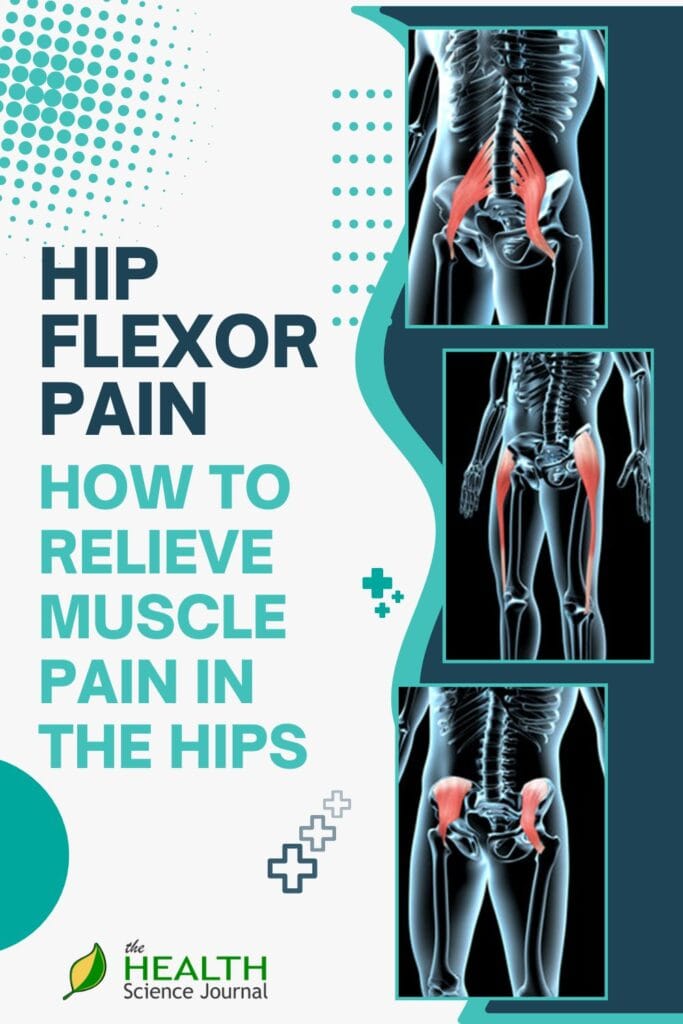There are extremely powerful muscles on the front of your body that can cause a great deal of hip flexor pain. In today’s age, hip flexor pain is everywhere due to sitting in chairs. Sitting causes the hip flexor muscles to shorten, and this directly causes hip flexor muscle tightness and referred pain in the low back and hips. I talked about this phenomenon in the post on the Psoas muscle and low back pain, but today we’re going to cover a different angle of the hip flexor muscles and hip flexor pain.
Topics:
- 3 Hip Flexor Pain Muscles
- Symptoms and Referred Hip Flexor Pain Patterns
- Trigger Point Release of Psoas, Iliacus, and TFL Hip Flexor Muscles

3 Hip Flexor Pain Muscles:
When it comes to muscle induced hip flexor pain, there are 3 main suspects. These 3 muscles are the Psoas, Iliacus, and Tensor Fasciae Latae (TFL).
Psoas:

Psoas Muscle
Iliacus:

Iliacus Muscle
TFL:

TFL Muscle
The Psoas, Iliacus, and TFL muscles all function in hip flexion (bringing the knee closer to the chest), and all 3 muscles tighten from excess sitting. The Psoas and Iliacus are very similar in function and are often referred to together as the Iliopsoas Complex. TFL is the outermost hip flexor and also plays a role in stability.
Symptoms and Referred Hip Flexor Pain Patterns:
The Iliopsoas (Psoas + Iliacus) hip flexor muscles function and cause pain in a similar pattern, so they are encapsulated in one image below. These muscles generally refer pain to the low back from their ability to pull the pelvis forward when tight, but they also can cause nagging pain in the front of the hip as shown in the right image below.

Iliopsoas Referred Pain Patterns [1]
TFL-induced hip flexor pain is better described as outer-hip pain. Hip pain from this muscle can come from a variety of activities, but the most common are from sitting and running – and they are quite different. If you have TFL-induced hip flexor pain you likely are a runner or a desk jockey, and you know which bucket you fall in.
Running: The TFL muscle is very active in running. TFL is involved in hip stability when on one foot (think when one foot is planted during running) and when swinging the leg forward. Running can overwork the TFL if it does not have the strength and endurance for the activity.
Sitting: Sitting in chairs shortens all hip flexor muscles by its nature, and TFL is no exception. If you are a sedentary person and have the referred hip flexor pain pattern below, TFL should be inspected for trigger points.

TFL Referred Pain Patterns [1]
Trigger Point Release Of Hip Flexor Pain:
TFL trigger points are fairly easy to work. These trigger points can be worked with your own hands, although the fingers may tire quickly. For higher pressure, I recommend a lacrosse ball or a versatile massage tool like the QL Claw. QL Claw is convenient because it stays on the ground, and has a knuckle-like feature to mimic the action of a massage therapist.
Psoas and Iliacus trigger points are more difficult to access and massage. There are tools designed to release each of these muscles specifically, but no tool can release both muscles like QL Claw. QL Claw was designed to release all 5 back pain-inducing muscles, and Iliacus and Psoas are on that list. QL Claw is easy to use for hip flexor pain and low back pain relief because all you need to do is lay on it. We have written and video tutorials on how to release the Psoas and Iliacus muscles for a deeper guide on working these muscles.
Sources:
[1] Donnelly, Joseph M. Travell, Simons & Simons Myofascial Pain and Dysfunction: the Trigger Point Manual. 3rd ed., Wolters Kluwer Health, 2019. [2] Davies, Clair, and Amber Davies. The Trigger Point Therapy Workbook: Your Self-Treatment Guide for Pain Relief. 3rd ed., New Harbinger Publications, Inc., 2013.


